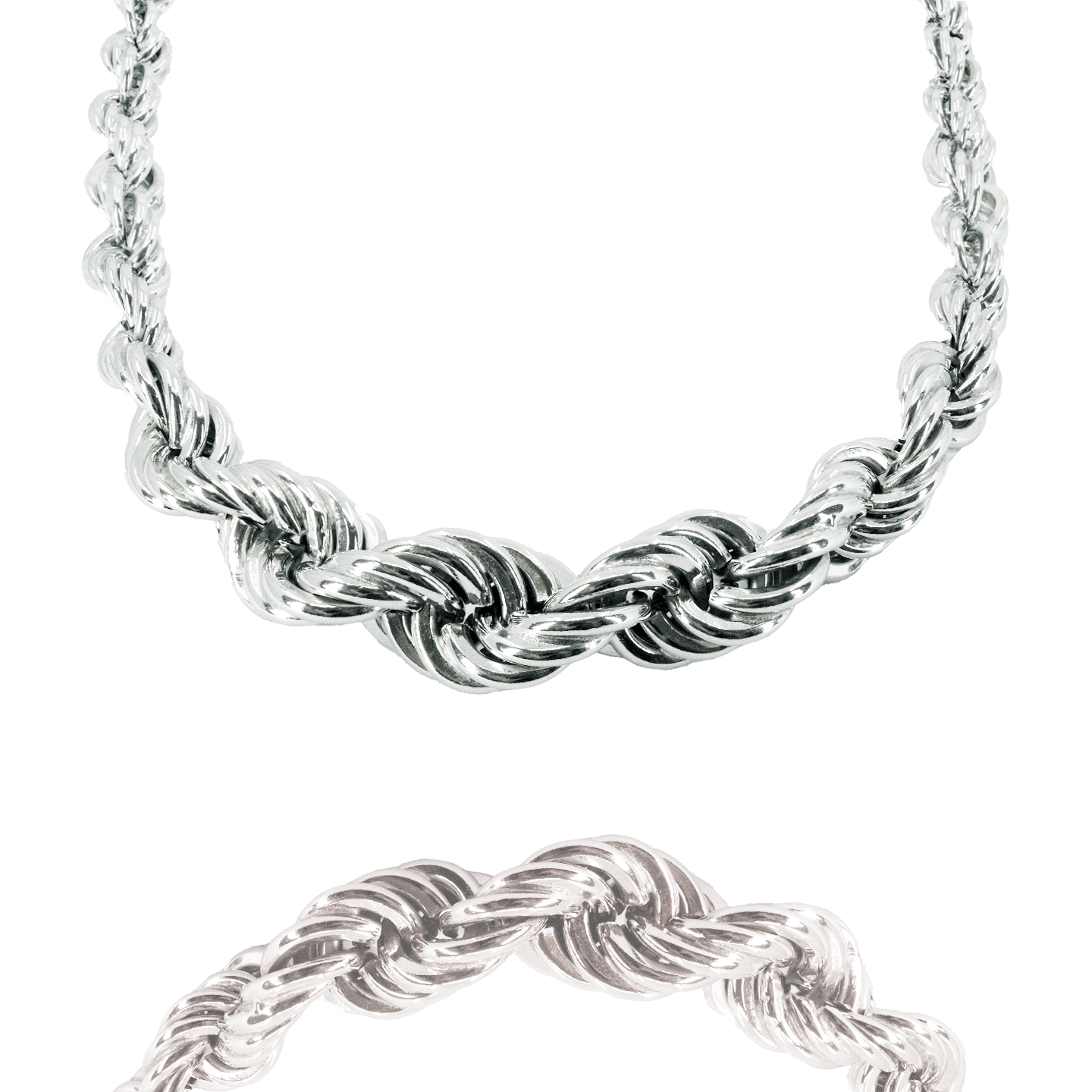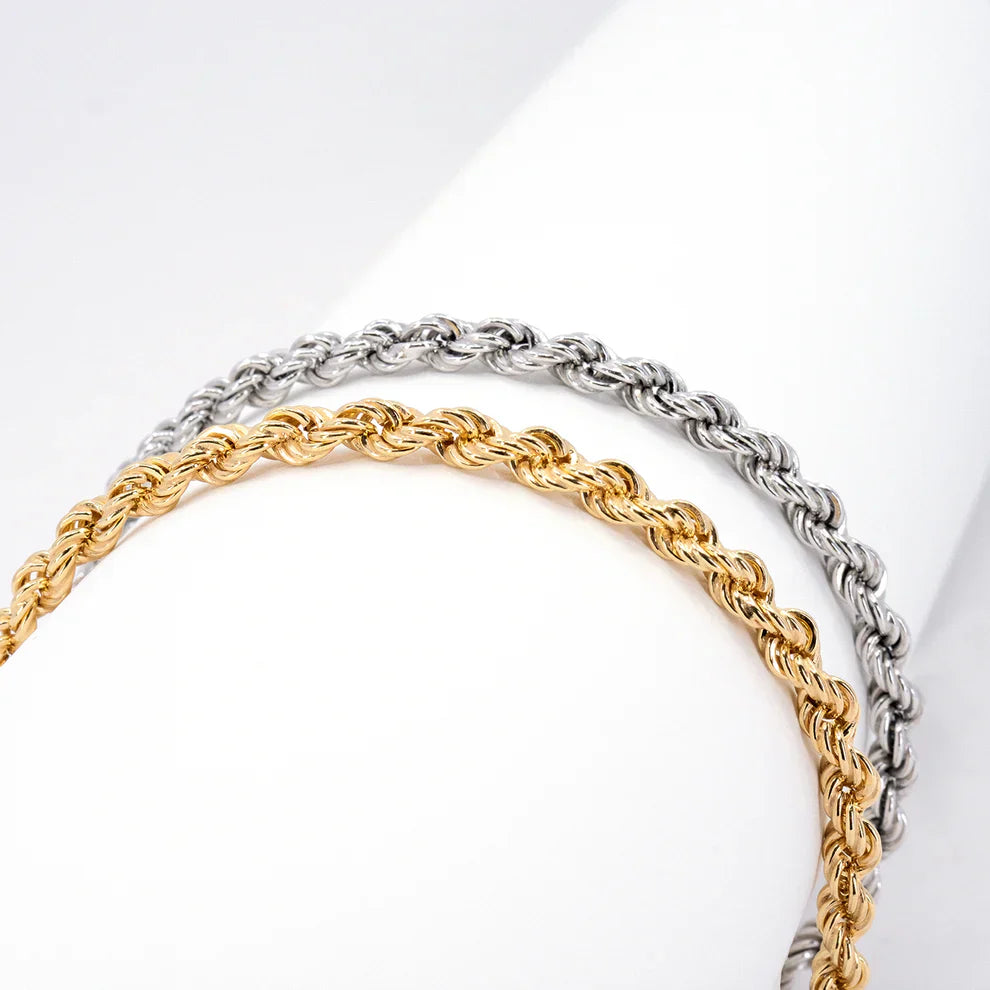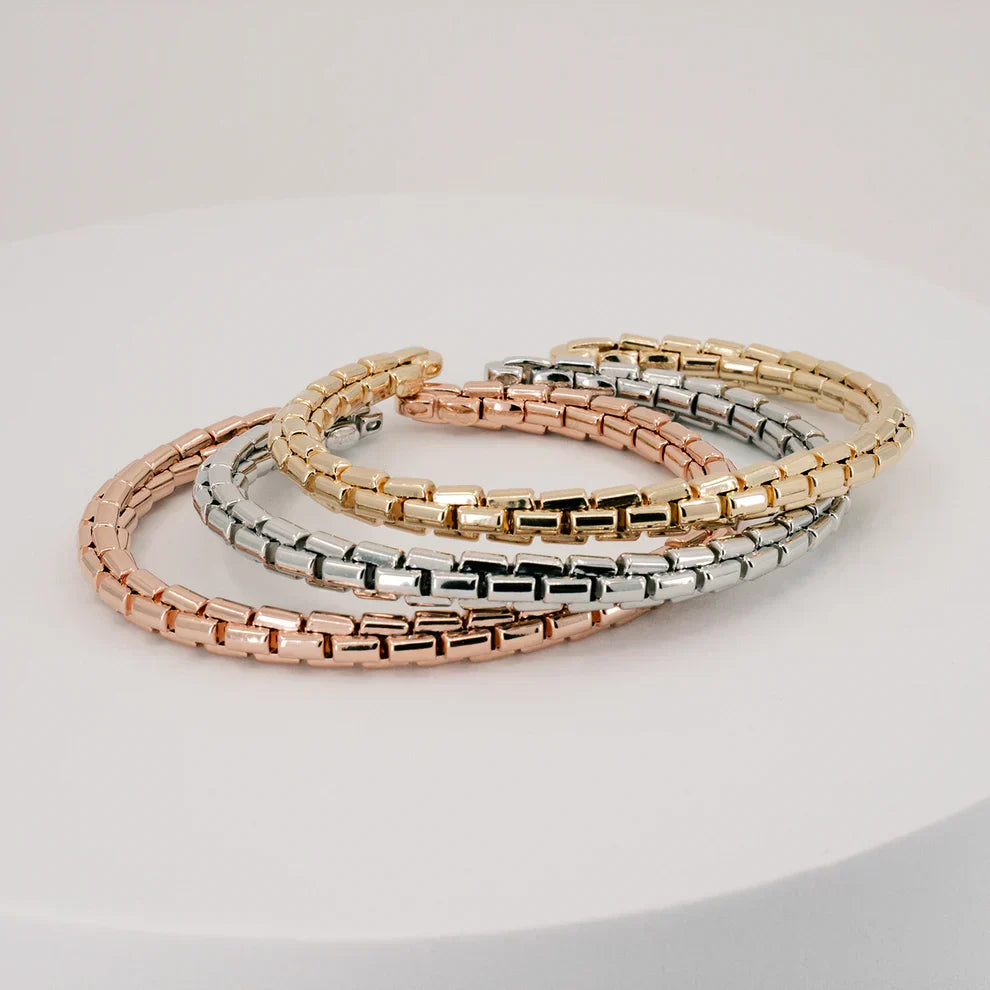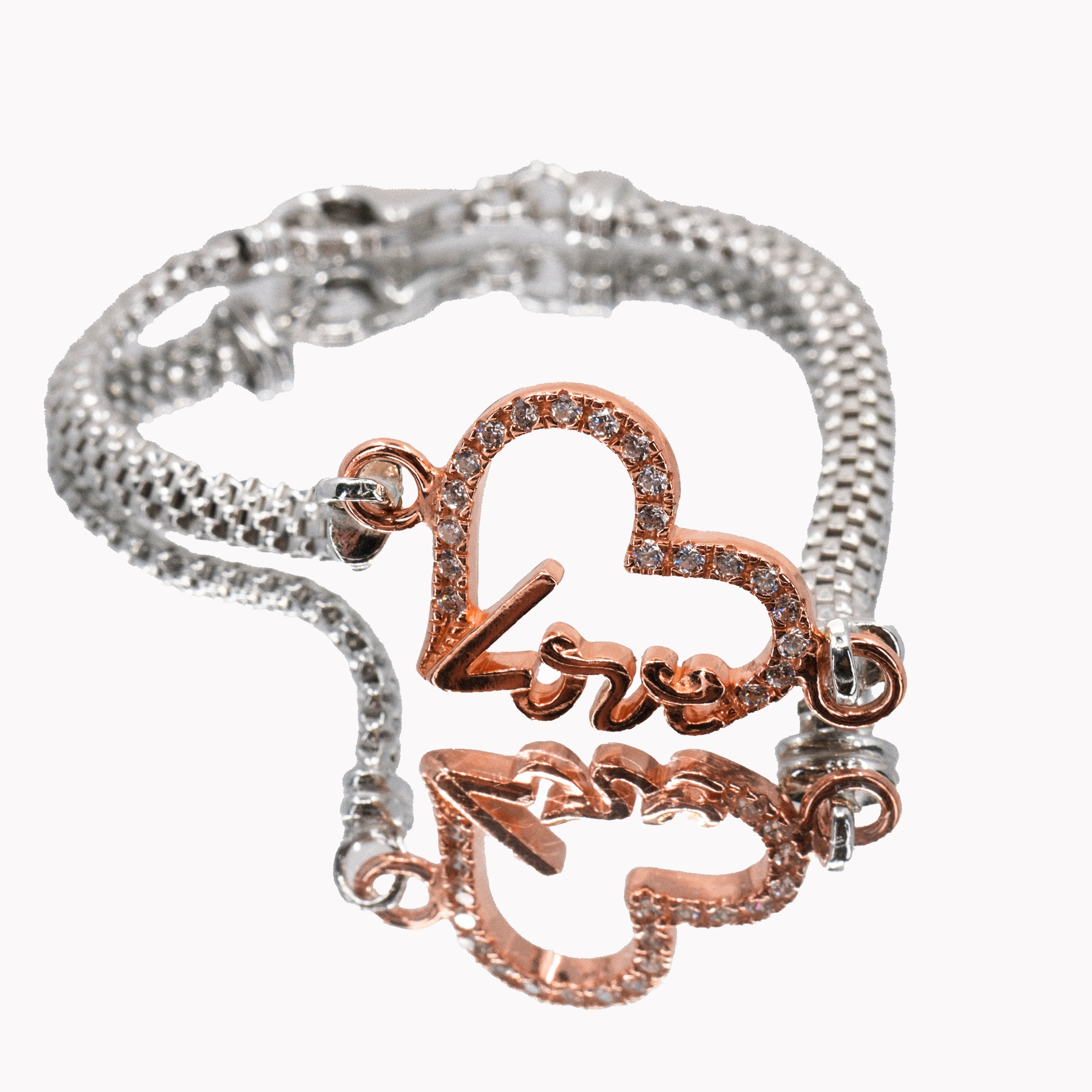When it comes to jewelry, few metals are as beloved and timeless as silver. Known for its sleek shine and versatility, silver is a go-to material for everything from casual accessories to high-end pieces. However, there are two types of silver that frequently cause confusion: silver-plated and sterling silver. While both can look quite similar at first glance, they are vastly different in terms of composition, durability, price, and longevity.
Understanding these differences is important not just for choosing the right pieces for your collection, but also for making an informed investment in your jewelry. In this blog, we’ll explore the key distinctions between silver-plated and sterling silver jewelry, explain why those differences matter, and help you determine which type of silver is right for your needs.
What is Sterling Silver?
Sterling silver is a high-quality metal alloy that consists of 92.5% pure silver and 7.5% other metals, typically copper. This specific mixture of metals makes sterling silver more durable and suitable for everyday wear compared to pure silver, which is too soft to stand up to daily use. Sterling silver has been the industry standard for fine jewelry for centuries due to its beauty, strength, and resistance to tarnishing.
The hallmark of sterling silver jewelry is the “925” stamp, which indicates that the piece contains 92.5% pure silver. This stamp guarantees that the jewelry is made from genuine sterling silver, making it a highly valued material. Sterling silver is prized not only for its brightness but also for its ability to take on a natural patina over time. Many people appreciate this patina because it gives the metal a unique, vintage character that cannot be replicated by other materials.
Benefits of Silver-Plated Jewelry
- Durability: Due to its alloy composition, sterling silver is strong and resistant to wear and tear. It can withstand daily use without losing its shape or beauty.
- Hypoallergenic: Sterling silver is a safe option for those with sensitive skin. It does not contain nickel, a common allergen found in other jewelry metals.
- Timeless Beauty: Sterling silver’s lustrous shine is long-lasting and enhances the overall look of any jewelry piece.
- Long-Lasting Investment: With proper care, sterling silver jewelry can last a lifetime or longer, making it a worthwhile investment.
What is Silver-Plated Jewelry?
Silver-plated jewelry, on the other hand, refers to pieces that have been coated with a thin layer of silver, typically through a process known as electroplating. During electroplating, the base metal (often copper, brass, or another alloy) is submerged in a solution that contains silver ions. When an electrical current is applied, the silver ions are deposited onto the surface of the base metal, creating a shiny silver coating.
The amount of silver applied in silver-plated jewelry is extremely thin, and while it gives the appearance of solid silver, it is not durable enough to withstand everyday wear. Over time, this silver layer can begin to wear off, especially with frequent use. The base metal beneath the plating may become exposed, leading to discoloration or damage to the piece. The quality of silver-plated jewelry largely depends on the thickness of the silver layer, but even with thicker coatings, it will never have the same longevity as sterling silver.
Benefits of Silver-Plated Jewelry
- Affordability: The biggest drawback of silver-plated jewelry is its cost-effectiveness. It offers the shiny, polished look of silver at a fraction of the price.
- Variety of Styles: Since silver-plated jewelry is more affordable, it allows for more variety. You can easily find trendy, fashion-forward pieces that follow the latest jewelry trends.
- Lightweight: Silver-plated jewelry is often lighter than solid sterling silver, making it a more comfortable option for those who prefer lightweight accessories.
- Great for Occasional Wear: If you're looking for a piece to wear for a special event or a few occasions, silver-plated jewelry offers a temporary solution without the commitment of a more expensive purchase.
While silver-plated jewelry may seem appealing, it's essential to remember that its affordability comes with certain trade-offs. If you want a long-lasting, high-quality piece, sterling silver is a far superior choice.
Key Differences Between Silver-Plated and Sterling Silver
1. Composition and Durability
- Sterling Silver is made from 92.5% pure silver and is a durable metal that can be worn every day without worry. Its high silver content means it’s resistant to tarnishing and, with proper care, will last for years or even generations.
- Silver-Plated Jewelry, however, is made by applying a thin layer of silver over a base metal. This plating can wear off over time, exposing the base metal beneath. While silver-plated jewelry can look beautiful initially, its thin silver layer means it won't withstand long-term use.
2. Cost
- Sterling Silver is more expensive due to the higher amount of pure silver it contains. The price of sterling silver jewelry reflects the quality, longevity, and precious metal content.
- Silver-Plated Jewelry is much cheaper, making it a great option for those on a budget or those who want to experiment with different styles without a hefty investment.
3. Maintenance
- Sterling Silver requires periodic cleaning to prevent tarnish and maintain its luster. It’s relatively easy to care for and can be polished to restore its shine. With proper care, sterling silver jewelry will retain its beauty for many years.
- Silver-Plated Jewelry requires more careful handling to avoid damage to the silver coating. Exposure to water, lotions, or chemicals can cause the silver layer to fade or wear off more quickly. It’s also more prone to scratches, which can expose the base metal beneath.
4. Longevity
- Sterling Silver is built to last. As a solid alloy, it doesn’t lose its shine easily and can even improve with age, developing a beautiful patina that adds character to the piece.
- Silver-Plated Jewelry is less durable, and the silver layer can wear off, especially with constant use. Over time, it may become discolored, and the base metal may start showing through.
5. Appearance
- Both sterling silver and silver-plated jewelry have the same shiny, reflective appearance when new. However, over time, the sterling silver will maintain its luster, while the silver-plated pieces may lose their shine as the coating wears off.
Which Is Right for You?
Choosing between sterling silver and silver-plated jewelry depends on your budget, your preferences, and how often you plan to wear the jewelry.
If you’re looking for high-quality, durable jewelry that will last for years and possibly even become a family heirloom, sterling silver is the clear winner. It’s a versatile and classic material that can be worn daily without losing its charm. Whether you’re purchasing a sterling silver ring, necklace, bracelet, or earrings, you can be sure you’re investing in a piece that will withstand the test of time.
On the other hand, if you want to add trendy pieces to your collection without committing to a high price tag, silver-plated jewelry offers an affordable option. It's great for occasional wear, costume jewelry, or when you want to experiment with different styles without a long-term commitment.
On the other hand, if you want to add trendy pieces to your collection without committing to a high price tag, silver-plated jewelry offers an affordable option. It's great for occasional wear, costume jewelry, or when you want to experiment with different styles without a long-term commitment.
Conclusion
Understanding the difference between silver-plated and sterling silver is crucial when shopping for jewelry. Sterling silver offers long-lasting beauty and durability, making it an investment piece that will continue to shine for years. Silver-plated jewelry, while more affordable, is less durable and may wear down over time.
Explore our collection today and invest in jewelry that reflects both style and substance. With Mideroche Jewelry, you can be sure you’re getting pieces that will stand the test of time.
Frequently Asked Questions
Sterling silver is a high-quality alloy made of 92.5% pure silver, while silver-plated jewelry has a thin layer of silver applied over a base metal, such as brass or copper. Sterling silver is more durable and retains its shine longer, while silver-plated jewelry may lose its silver coating over time.
Sterling silver lasts much longer than silver-plated jewelry. Because sterling silver is a solid alloy, it doesn’t wear down or lose its appearance as quickly as silver-plated jewelry, which can lose its silver layer with regular wear.
Silver-plated jewelry can be a good option for those on a budget or for temporary wear. It offers the look of silver at a lower price, but it may require more care and will not last as long as sterling silver.
Sterling silver requires regular cleaning to prevent tarnishing. It should be polished with a soft cloth and stored in a dry, cool place. Avoid exposing it to moisture, perfumes, and lotions to keep it looking its best.
Silver-plated jewelry should be cleaned gently and stored away from moisture and chemicals to prevent the silver layer from wearing off. It’s best to remove silver-plated jewelry before swimming, showering, or applying lotions.
While silver-plated jewelry looks great, it’s not as durable for daily wear compared to sterling silver. Over time, the silver plating can wear off, especially with frequent exposure to sweat, water, and chemicals.
Yes, sterling silver is typically hypoallergenic since it does not contain nickel, a common allergen found in other metals. It’s a great choice for people with sensitive skin.





